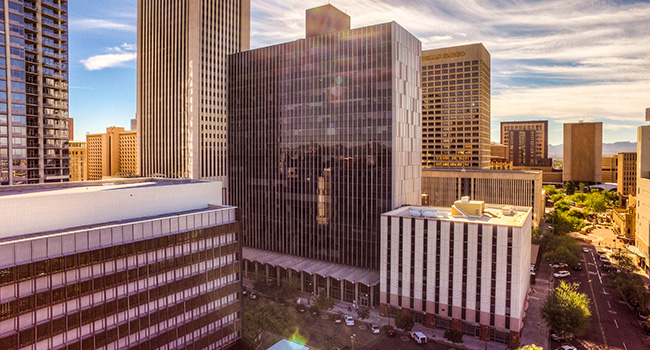The Phoenix office market experienced a rise in leasing activity, high net absorption and increased rental rates according to second quarter reports. As Class A space fills in some of the most desired corridors of the city such as Camelback Corridor, companies are turning to Class B space in new corridors like Phoenix Midtown to find a home for their offices.
In recent years, the Phoenix area has seen a rise in job growth and is gaining a reputation for being a cost effective market for companies and their employees. According to CBRE’s “Scoring Talent Tech” report, companies see the city and surrounding area as one of the most affordable markets, both for operational costs and for their employees to live.
Phoenix’s wage-to-apartment rent ratio is just under 13 percent, making it the fifth most reasonable city for tech employees to work in. It isn’t surprising to find that the report currently ranks as the third greatest large market for tech job growth, behind the Bay Area and greater Baltimore.

Businesses are becoming increasingly aware of these advantages, as the total rate of vacancy has steadily declined over the last five years. According to a recent Cushman & Wakefield second quarter report, office vacancy in the Phoenix metropolitan area is a mere 18 percent. Class A space accounts for 46 percent of the total net absorption, while Class B has risen to 47.6 percent.
According to Kidder Mathews’ second quarter report, Phoenix unemployment rate sits at 4.8 percent compared to 5.2 percent recorded at this time last year. Also the overall office vacancy rate is the strongest start to a year since the second quarter in 2008.

Accompanying the decreased vacancy of desirable corridors is the rising rent of these buildings. Phil Breidenbach, executive vice president of Colliers International, believes this is a factor that drives even longtime Class A tenants to look for other possibilities.
“As rates go up, there are people that have been in Class A space that just get priced out of the market,” said Breidenbach. “And there are some really nice Class B options that they are taking advantage of.”
JLL vice president Vicki Robinson views the Midtown market as one of those options, expecting demand in the corridor to increase in response to these rising rents in corridors such as Camelback. In 2016, Class A asking rents in the Camelback corridor averaged $33.48 per square foot, while in Midtown it sits at $24.03. Robinson expects more prospective tenants to consider the Midtown market because of this wide gulf in rent price.


“The Midtown submarket is an affordable alternative to Camelback Corridor’s Class A space but it also provides value because tenants still have access to ample amenities,” Robinson said. “Many of my clients appreciate Midtown because it offers quick access to all of the governmental services found at the Capitol Mall and to the court system located in downtown Phoenix.”




